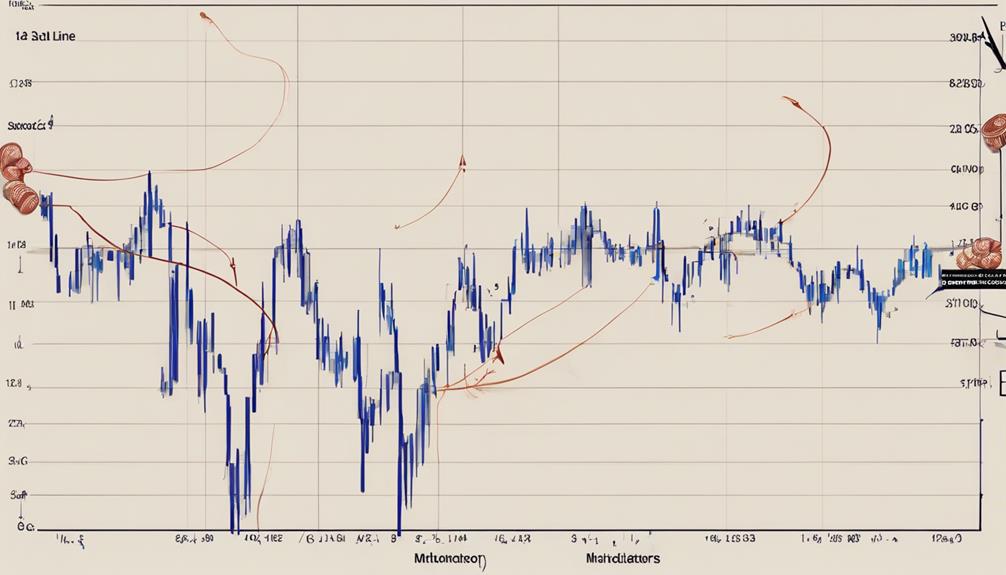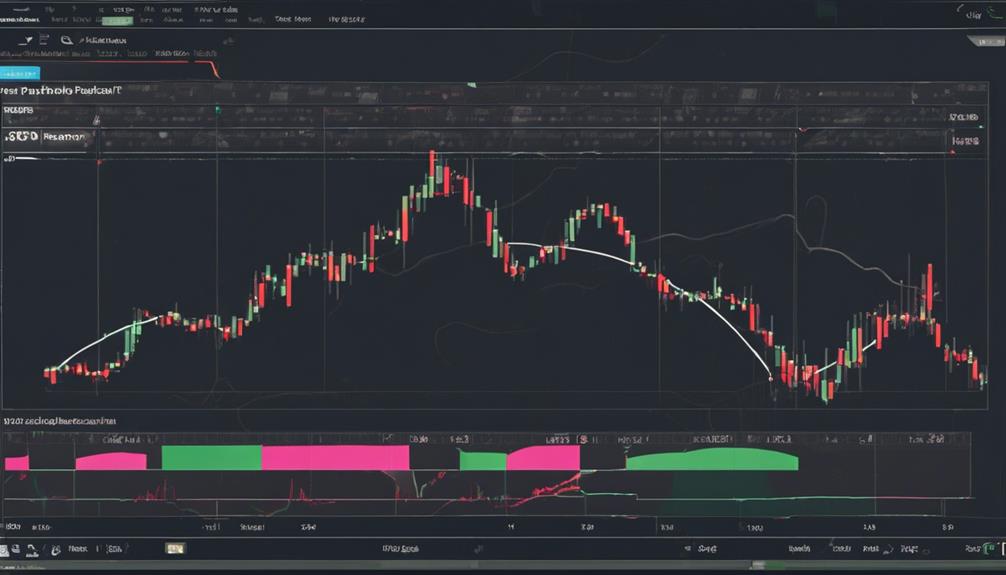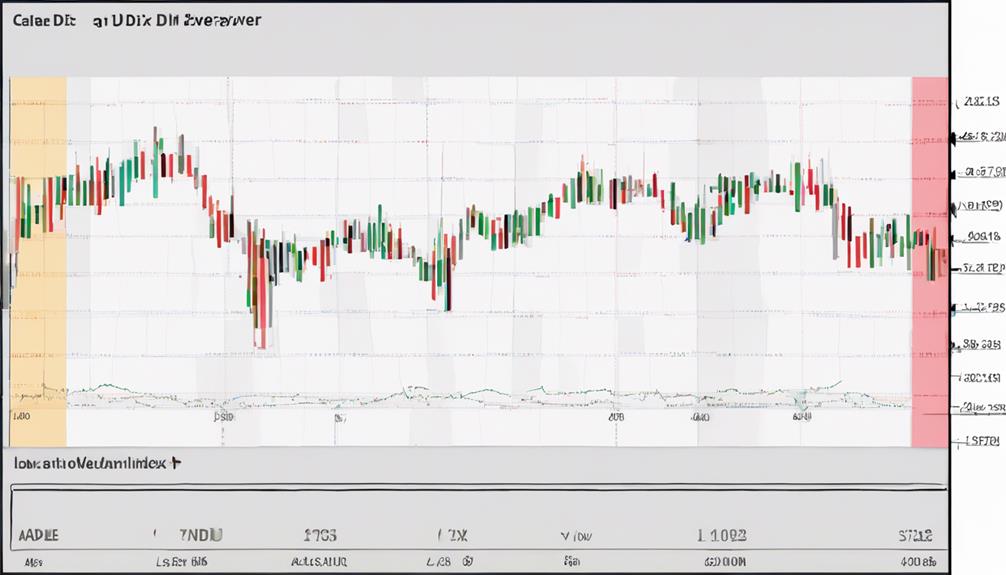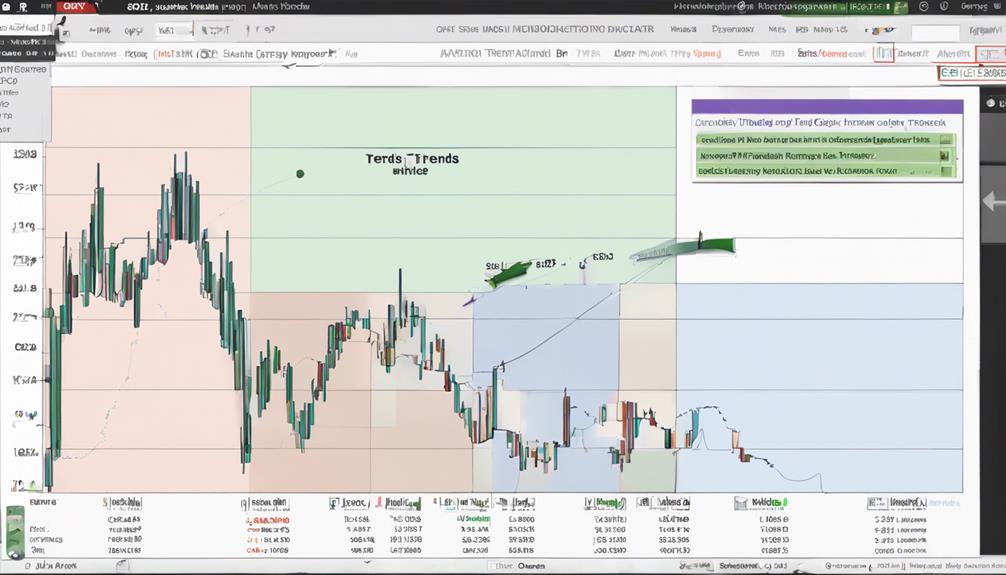Discovering the effectiveness of combining multiple trend-following indicators can significantly improve your trading outcomes.
Have you ever considered that using a combination of Moving Average Indicators, Dynamic Support and Resistance Indicators, Trend Strength Indicators, and Market Condition Prediction Indicators could enhance your decision-making process?
By exploring how these key indicators work together harmoniously, you might uncover a whole new perspective on trend following strategies.
Stay tuned to uncover the secrets of how these indicators can potentially elevate your trading game to new heights.
Moving Average (MA)
The Moving Average (MA) indicator is a fundamental tool used in trend analysis to smooth out price fluctuations and determine market trends. There are two main types:
- The Simple Moving Average (SMA), which gives equal weight to all price changes over a specific period.
- The Exponential Moving Average (EMA), which places more weight on recent price changes, making it more responsive to current market conditions.
Moving Average Convergence-Divergence (MACD)

Utilizing two moving averages, the Moving Average Convergence-Divergence (MACD) indicator offers traders insights into market trends. The MACD line shows the gap between short-term and long-term moving averages, while the signal line is an average of the MACD line. Crossovers between these lines signal potential trend changes, providing traders with important trading signals.
Histogram bars on the MACD display the distance between the MACD line and the signal line visually. Understanding the relationship between these components can help traders gauge the strength and direction of a trend effectively. By monitoring the MACD indicator, traders can make informed decisions based on the signals generated by the interactions of these moving averages.
Parabolic Stop and Reversal (Parabolic SAR)

Applying a dynamic approach to trailing stop levels, Parabolic Stop and Reversal (Parabolic SAR) offers traders essential guidance in trend following strategies.
The SAR indicator, represented by dots above or below price, flips its position upon hitting a stop level, indicating a potential trend reversal. This feature helps traders in setting trailing stops and managing risk effectively in trending markets.
While SAR provides frequent buy and sell signals, combining it with other indicators can help filter out false signals, enhancing the accuracy of trading decisions.
Average Directional Index (ADX/DMS) Indicator

When analyzing market trends, understanding the Average Directional Index (ADX/DMS) Indicator becomes crucial for assessing trend strength effectively. Here are key points to consider:
- ADX measures trend strength with values above 25 indicating a strong trend.
- It consists of two directional indicators: +DI for bullish strength and -DI for bearish strength.
- Crossovers between +DI and -DI can signal potential trend reversals.
- Divergences between the DMI lines can indicate changes in trend momentum.
- ADX is most effective in trending markets to identify the strength and direction of trends accurately.
Smooth Trend Finder Indicator

The Smooth Trend Finder Indicator's custom design focuses on recent price movements to anticipate future changes based on recent data, aiding traders in making informed decisions. This indicator incorporates technical indicators like Exponential Moving Averages and SAR (Stop and Reverse) to analyze price action effectively.
By utilizing Simple Moving Averages, it helps traders spot divergence and convergence patterns, indicating potential trend reversals. The Smooth Trend Finder Indicator generates timely alerts for entry and exit points, enhancing trading accuracy by filtering out market noise and false signals.
It's particularly valuable for identifying market conditions such as sideways movement or trends, providing traders with a reliable tool to navigate the dynamic nature of the markets.
What Are the Most Important Key Trend Following Indicators to Look for?
When it comes to trend following in trading, keeping an eye on essential trend following indicators is crucial. Some of the most important indicators to look for include moving averages, relative strength index (RSI), and MACD (Moving Average Convergence Divergence). These indicators can help traders identify potential market trends and make informed decisions.
Frequently Asked Questions
Which Indicator Follows Trend?
To follow a trend, the indicator you need is the Parabolic Stop and Reversal (SAR). It dynamically marks support and resistance levels with dots on the price chart. This helps you stay aligned with the market's direction for successful trading.
What Is Indicator Trends?
Indicator trends are the direction and strength of market movements indicated by technical analysis tools. They help you spot potential entry and exit points based on market trends. Understanding these trends is crucial for making informed trading decisions.
What Is the Trend Predictor Indicator?
To understand the Trend Predictor Indicator, you rely on its ability to forecast future price movements by analyzing trends and patterns. It guides your market entries and exits by predicting market conditions, trend changes, and potential reversals for informed trading decisions.
What Is the Best Trend-Following Strategy?
For the best trend-following strategy, consider a combination of moving averages, MACD, and Parabolic SAR. By following prevailing trends with precision entries and exits, you can optimize profits and manage risks effectively.
Conclusion
In conclusion, mastering the art of trend following requires a keen eye for key indicators like Moving Average, MACD, Parabolic SAR, ADX/DMS, and Smooth Trend Finder. By combining these powerful tools and implementing sound risk management strategies, traders can navigate the markets with confidence and precision.
Remember, success in trend following lies in the ability to interpret these indicators effectively and adapt to changing market conditions. Stay vigilant, stay informed, and stay ahead of the trend.
